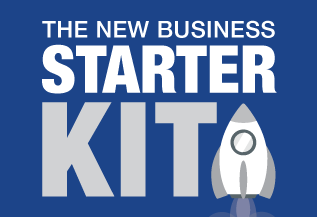How to create a supplier questionnaire to assess risk in 2023
Information is power – and protection – when managing supply chain risk
Growing business means increasing risk
As your business grows so does your supply chain – and the work involved in managing supplier relationships and expectations. More suppliers means less visibility and greater difficulty keeping a handle on your exposure to risk.
Cyberattacks, governance failures and questionable ethical practices – such as modern slavery and environmental harm – threaten the reputation of your brand. Business must be across the immediate supply chain, and their suppliers too.
It's a complex process, but collecting and aggregating information from your supply chain is now a must as regulatory bodies and consumers expect holistic operational transparency. Managing the risk posed by your suppliers – and harnessing the value they provide – is crucial to long-term business growth.
Part of the process is creating and distributing a business as usual (BAU) supplier questionnaire to help you assess supplier risk, diversity and compliance, and benchmark performance across your supply chain.
Reassessing the supply chain post Covid-19
The Covid-19 pandemic which threw supply chains into disarray. Scrambling to manage worldwide transport delays, fear was a key driver in purchasing and procurement decisions.
It’s understandable if your business brought on some new suppliers during the pandemic without adhering to the usual assessment processes. But as supply chains stabilise, it’s time to go back and reassess those suppliers with a BAU supplier questionnaire to mitigate potential risks.
How to create a BAU supplier questionnaire
Your BAU supplier questionnaire gathers the information you need to make an informed decision about your working relationship. Evaluating suppliers through a questionnaire streamlines the process, saving you time and resources.
What to include
- An introduction explaining the purpose of the survey, asking suppliers to be honest, and outlining your expectations.
- A rundown of resources and tools to assist suppliers in completing the survey – e.g. the Australian Government’s Modern Slavery Act 2018.
-
The body of the survey with questions asking if the supplier is:
- compliant with the Modern Slavery Act
- subject to any ongoing investigations or charges relating to modern slavery and other abuses
- taking any action to tackle modern slavery, other abuses and environmental harm through their own organisation and their supply chains (e.g. training employees)
- equipped to respond to any allegations of modern slavery, substandard working conditions or environmental harm in its operations or supply chains
- engaged in due diligence activities to identify, prevent and mitigate fraud and corruption in its operations and supply chains
- self-funded or reliant on another party
- resourced to provide quality products in a timely manner
- proven to have a good reputation (e.g. positive testimonials)
- equipped with solid operational and communication policies and procedures
- certified with any required legal or industry bodies.
The Modern Slavery Register is an Australian Government initiative, providing an
online register for entities that must (or choose to voluntarily) report under the Modern Slavery Act 2018. Organisations submit
their modern slavery statements to the online register for review and publication by the Australian Border Force. |
What if a supplier doesn’t meet your standards?
If your supplier questionnaire reveals some discrepancies between your expectations and your supplier’s operations, it doesn’t have to be awkward or end the relationship (unless you decide that’s the best decision for your business).
If you want to keep doing business, encourage suppliers to see the gaps as areas for improvement that can be resolved together for the benefit of both parties. This might mean providing supplier training or on-site assistance for a period of time. Make the changes required clearly measurable and follow up on an ongoing basis so you can track the supplier’s performance and benchmark improvements.
Forming a partnership and providing suppliers with resources to increase their competencies results in a stronger and more competitive supply chain – and significant business gains.
Get the insights you need to protect your business
When it comes to managing supplier risk, it pays to be proactive and take a good look at your suppliers now, before a crisis hits. Get advice from an expert accountant to inform your BAU supplier questionnaire, and then guidance around how to act on the insights it extracts.














